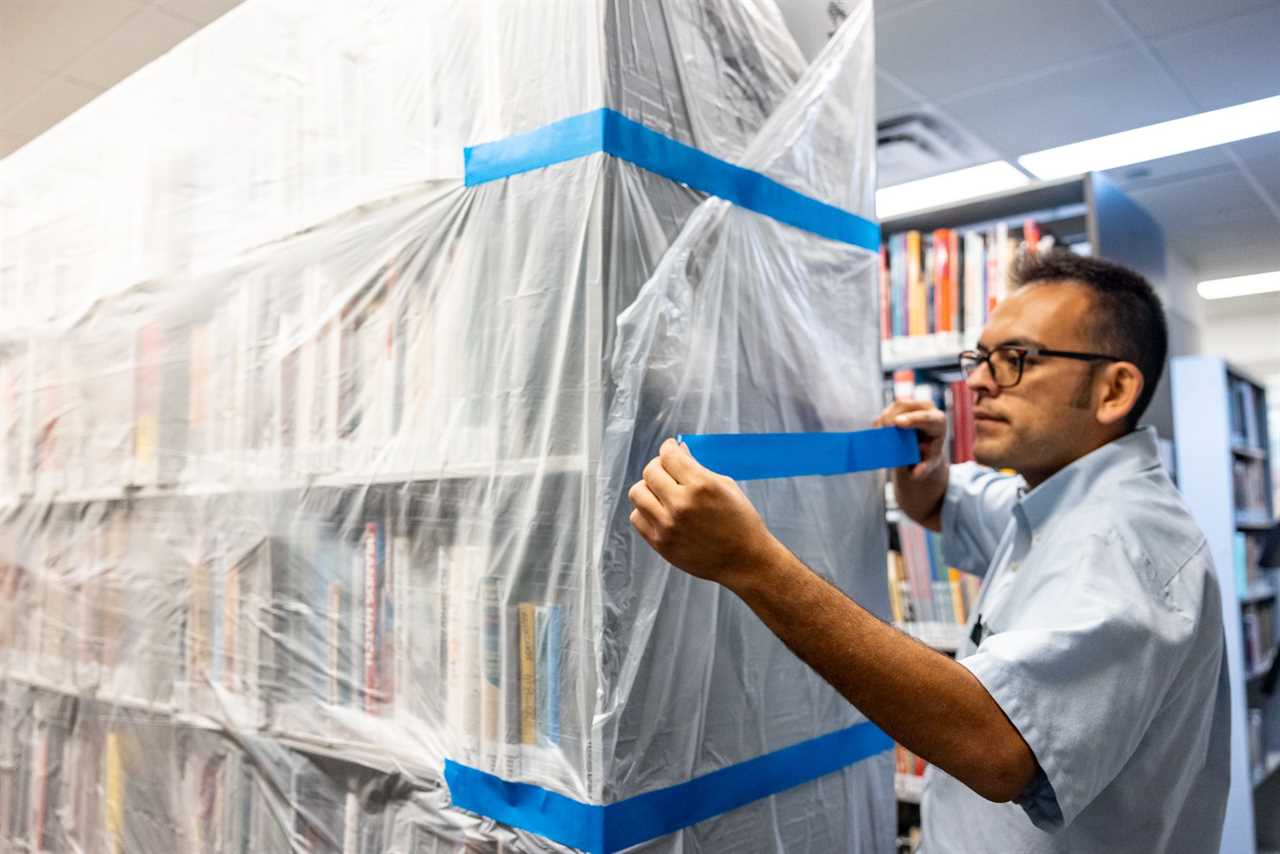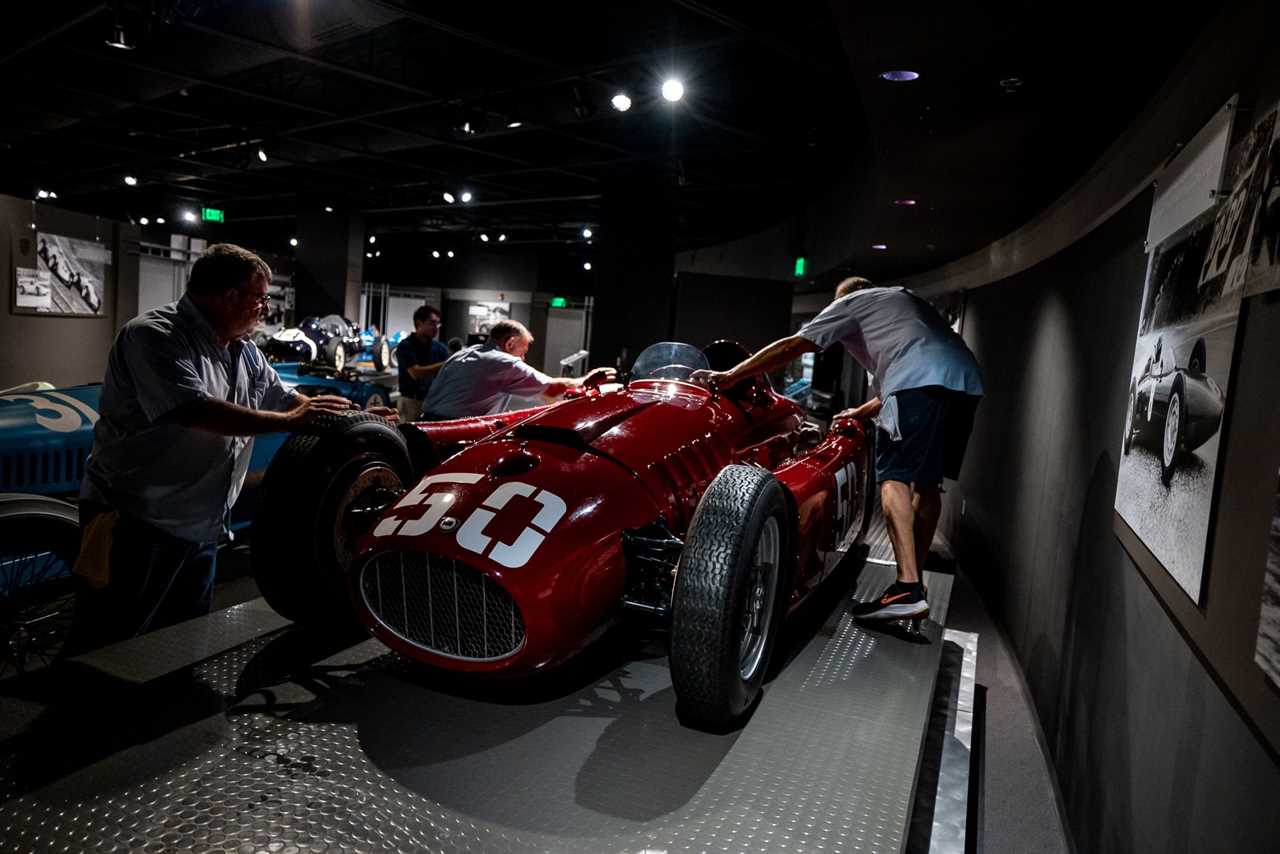
Revs Institute/Maximilian Trullenque
Running a car museum in Florida has its complications. Hurricane season poses huge risks, and so, the Revs Institute in Naples, home to one of the greatest collections of sports racers anywhere, has a hurricane plan in place. With Hurricane Ian bearing down in late September, the museum had to put it into action. In an interview with Road & Track, Scott George, curator of collections for the Revs Institute explained the process. It’s elaborate.

Revs Institute/Maximilian Trullenque

Revs Institute/Maximilian Trullenque
The Institute closely monitors the weather during hurricane season, and if there’s a chance for a category 3 or above storm it starts preliminary prep. This involves “pre-staging” sandbags by the entrances and exits of the building and putting plastic coverings to be unfurled over the library stacks. Having all these in place means they can be quickly deployed if necessary. The Revs also have hurricane barriers that can be placed around the building and curtains in the library that protect material in case of a roof leak. All drains are plugged as well, in case of water rising up from the sewers.
That’s the easy bit. Moving cars isn’t. The most valuable cars go up to the third of three floors, while the rest get moved to the second floor. Every year, the Revs updates its hurricane plan, and there’s a map for where all the cars should go. Previous plans stipulated around 40 to 50 cars to be moved—the current plan, based on revised floodplains, called for 115 cars to be moved.
To move all the historic sheet metal, displays and furniture must be broken down, and cars on stands have to be put on a portable lift to then be put on the floor. Two teams of five then get to work, with one team on lower floors pushing cars onto an elevator and the other receiving and positioning cars on the upper floors. Those on the upper floors have to make sure there are oil-drip pans under each. There’s only just enough space to squeeze between the cars once everything is in position. Additionally, some cars are stored in a space above the Institute’s workshop—George says the team managed to squeeze in 21 Porsches.
In total, the process took 12 hours. Work began first thing on Monday, September 25 and the teams were finished by 2:30 PM the next day. Ideally, George says the Institute would move cars even earlier, so that employees could get home with plenty of time to do personal prep, but it only became clear over the weekend that Hurricane Ian would necessitate this work.

Revs Institute/Maximilian Trullenque
The Institute was fortunately not damaged by the hurricane, as Ian made landfall north of Naples, devastating the Fort Myers area as well as its barrier islands just off shore–Pine Island, Captiva, Sanibel. With a collection like this, Revs simply can’t afford to take chances. Cars include Dan Gurney’s Spa-winning Eagle T1G, 1948 Ferrari 166, one of the first cars the company made, a one-of-six C2 Corvette Grand Sport, a Mercedes SSK, an Auburn Boattail Speedster, multiple GT40s, a McLaren F1, and basically every important Porsche racer from the Fifties through the early Seventies. Plus many, many more.
Putting everything back after the storm is essentially the opposite of putting everything away, though the museum is deeply cleaned beforehand. The whole process takes around 40 hours, and is done with considerably less urgency than the hurricane prep.

Revs Institute/Maximilian Trullenque
Museums like Revs are stewards of automotive history, and protecting cars and automobilia like this from the worst of Mother Nature is a necessary part of that stewardship. Shipping cars off-site can, of course, take them out of a storm’s path, but it’s virtually impossible with such a large collection. Plus, loading cars onto transporters increases risk of damage.
George says that this sort of hurricane prep is only necessary once every few years at most. Still, the plan will be updated every year so that the process goes smoothly if a storm threatens Naples, Florida. The museum will reopen to the public on November 17th.






